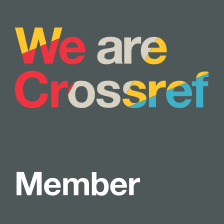Milena Cvjetković – College of Academic Studies ”Dositej”, Bulevar vojvode Putnika 7, 11000 Belgrade, Serbia
Milovan Cvjetković – Technical school, Bulevar vojvode Putnika 7, 11000 Belgrade, Serbia
Saša Stepanov – MEF – Faculty of Applied Management, Economics and Finance, Jevrejska 24/1, 11000 Belgrade, Serbia
7th International Scientific-Business Conference – LIMEN 2021 – Leadership, Innovation, Management and Economics: Integrated Politics of Research – SELECTED PAPERS, Online/virtual, December 16, 2021, published by the Association of Economists and Managers of the Balkans, Belgrade; Printed by: SKRIPTA International, Belgrade, ISBN 978-86-80194-53-0, ISSN 2683-6149, DOI: https://doi.org/10.31410/LIMEN.S.P.2021
Keywords:
Marketing communication;
Brand;
Business performance;
Consumer loyalty
Abstract
Organizations through various forms of marketing communications strive to increase brand awareness and create a brand image in the market. Through these communications, relationships between consumers and companies are developed, to build customer loyalty. Correlation relations showed that there is a great dependence between the variables of marketing communication and the variables of brand building and business performance. The regression model found that marketing communications have the greatest impact on brand recognition in the market, highlighting the impact of public relations and direct marketing. It has been confirmed that economic propaganda, sales promotion and internet marketing are the best predictors of market participation as business performance of an organization. The results of the research indicated that the impact of marketing communications on brand building is greater if the organization is ready to conduct adequate marketing research and to the greatest extent satisfies the needs and requirements of consumers.

Download file
LIMEN Conference
Creative Commons Non Commercial CC BY-NC: This article is distributed under the terms of the Creative Commons Attribution-Non-Commercial 4.0 License (https://creativecommons.org/licenses/by-nc/4.0/) which permits non-commercial use, reproduction and distribution of the work without further permission.

References
Ahmed, Z., Rizwan, M., Ahmad, M., Haq, M. (2014). Effect of brand trust and customer satisfaction on brand loyalty in Bahawalpur. Journal of Sociological Research, 5(1), 306-326. 10.5296/jsr.v5i1.6568
Amiri, N. S., Dastourian, B., Foroudi, P., Nankali, A. (2017). Information technology directors’ efforts on innovation, integrated marketing communications and brand equity. The Bottom Line. 30 (4). pp. 297-309. doi:10.1108/BL-08-2017-0022)
Baidya, M., & Maity, B. (2010). Effectiveness of integrated marketing communications: empirical analysis of two brands in India. Journal of Indian Business Research 2 (1), 23-31. DOI: 10.1108/17554191011032929
Bakator, M., Đorđević, D., Ćoćkalo, D., Bogetić, S. (2020). The Impact of Consumer-Company Relationships on Brand Loyalty. Management. Journal of Sustainable Business and Management Solutions in Emerging Economies, 25 (2), 53-64. DOI: https://doi.org/10.7595/ management.fon.2019.0016
Bakator, M., Petrović, N. (2016). Correlation between marketing strategy, product quality and promotion on the mobile devices market in Serbia. Journal of Engineering Management and Competitiveness (JEMC), 6(2), 67-74. http://www.tfzr.uns.ac.rs/jemc/files/Vol6No2/ V6N22016-01.pdf
Buil, I., Martínez, E., De Chernatony, L. (2013). The influence of brand equity on consumer responses. Journal of consumer marketing. 30(1), 62-74. 10.1108/07363761311290849
Brunello, A. (2013). The relationship between integrated marketing communication and brand equity. International Journal of Communication Research, 3(1), 9-14. https://ijcr.eu/articole/110_Pagini%2009-14%20Brunello%20IJCR%201-2013.pdf
Cvjetković, M., Jovanović, Z., Stepanov, S., Cvjetković, M. (2020). Digital marketing communications in the function of creating competitive advantages in the market. Marketing, 51(1), 43-50. DOI: 10.5937/markt2001043C
Damarjati, I. H., Kusumawati, A., Mawardi, M. K. (2016). The influence of integrated marketing communication (IMC) on brand equity and purchase decision (survey on indosat-M3 customers among members of unit Aktivitas band Universitas Brawijaya class of 2014). Journal Administrasi Bisnis, 34(1), 29-37. https://media.neliti.com/media/publications/86853-EN-the-influence-of-integrated-marketing-co.pdf
Delgado-Ballester, E., Navarro, A., & Sicilia, M. (2012). Revitalising brands through communication messages: the role of brand familiarity. European Journal of Marketing 46 (1), 31-51. DOI:10.1108/03090561211189220
Elliott, R., Boshoff, C. (2008). The influence of business orientations in small tourism businesses on the success of integrated marketing communication. Management Dynamics 17 (4), 32-46. https://hdl.handle.net/10520/EJC69741
Gligorijević, M. (2011). Specifičnosti izgradnje brenda na poslovnom tržištu. Marketing, 42(3), 141-149.http://scindeks-clanci.ceon.rs/data/pdf/0354-3471/2011/0354-34711103141G.pdf
Hänninen, N., Karjaluoto, H. (2017). The effect of marketing communication on business relationship loyalty. Marketing Intelligence and Planning, 35 (4), 458-472. DOI: 10.1108/ MIP-01-2016-0006
He, H., Li, Y. Harris, L. (2012). Social identity perspective on brand loyalty, Journal of Business Research. 65(5), 648-657. https://doi.org/10.1016/j.jbusres.2011.03.007
Keller, K.L. (2009). Building strong brands in a modern marketing communications environment. Journal of Marketing Communications 15 (2/3), 139-155. https://doi. org/10.1080/13527260902757530
Kerr, G., Drennan, J. (2010). Same but different – perceptions of integrated marketing communications among marketing communication partners in Australia. Journal of Promotion Management 16 (1), 6-24. DOI: 10.1080/10496490903571233
Kitchen, P.J., Schultz, D.E. (2009). IMC: New horizon/false dawn for a marketplace in turmoil? Journal of Marketing Communications 15 (2/3), 197-204. https://doi. org/10.1080/13527260903003793
Luxton, S., Reid, M., Mavondo, F. (2015). Integrated marketing communication capability and brand performance. Journal of Advertising, 44 (1), 37-46. https://doi.org/10.1080/0091336 7.2014.934938
Prasad, K., & Dev, C.S. (2000). Managing hotel brand equity: a customer-centric framework for assessing performance. Cornell Hotel and Restaurant Administration Quarterly 41 (3), 22-31.
Ramanathan, U., Subramanian, N., Parrott, G. (2017). Role of social media in retail network operations and marketing to enhance customer satisfaction. International Journal of Operations & Production Management, 1-25. http://hdl.handle.net/10547/623033
Slotegraaf, R. J., Pauwels, K. (2008). The impact of brand equity and innovation on the long-term effectiveness of promotions. Journal of Marketing Research, 45(3), 293-306. https:// doi.org/10.1509/jmkr.45.3.293
Šerić, M., Gil-Saura, I. (2012a). ICT, IMC, and brand equity in high-quality hotels of Dalmatia: an analysis from guest perceptions. Journal of Hospitality Marketing & Management 21 (8), 821-851. https://doi.org/10.1080/19368623.2012.633211
Ungerman, O., Dedkova, J. Gurinova, K. (2018). The impact of marketing innovation on the competitiveness of enterprises in the context of industry 4.0. Journal of Competitiveness, 10 (2), 132-148. DOI: 10.7441/joc.2018.02.09
Vranješ, M., Jovičić, D., Drinić, D. (2016). Evaluation of brand from the perspective of consumers. Marketing, 47(2), 129-136. DOI: 10.5937/markt1602129V
Weru, M. Mbugua, D. (2017). Effect of information and communication technologies on competitiveness of manufacturing small and medium scale enterprises. International journal of social sciences and Information Technology, 3 (3), http://www.iiste.org/Journals/


